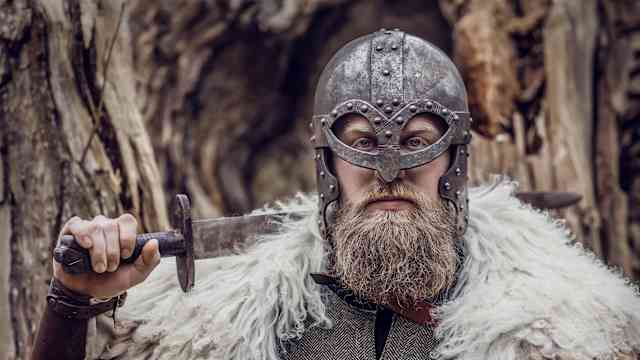When the Vikings first settled in Iceland in the 9th century, they brought with them a deep devotion to a pantheon on Norse gods. Wooden carvings of deities such as Odin, Thor, Freyr and Frigg adorned their temples, and Viking warriors charged into battle confident that their faith would reward them with a trip to Valhalla if they were felled on the battlefield.
Paganism thrived in Iceland until around A.D. 1000 when lawmakers agreed to make Christianity the country’s official religion. While the polytheistic religion of the Vikings was driven underground, it was never totally extinguished thanks in large part to 13th-century Icelandic scholar Snorri Sturluson, who recorded the ancient Nordic mythology in the “Prose Edda.” Even among Christians, Nordic beliefs in elves, trolls and nature spirits were handed down from generation to generation.
Around the time of the return of medieval Icelandic saga manuscripts from Denmark in 1971, interest in Old Norse mythology in Iceland began to grow. In 1972, a small group of believers seeking a faith rooted in the nature of Iceland and their Viking ancestors formed the Asatru Association in a Reykjavik café. The following year, the association received recognition from the Icelandic government as an official religious organization, which allowed it to conduct legal marriages, burials and other ceremonies as well as receive a share of the country’s tax money earmarked for official religions.
Although nearly 80 percent of Iceland’s population belongs to the Lutheran Church, the Asatru Association has become one of the country’s fastest-growing religions. According to Statistics Iceland, membership in the neo-pagan religion has grown nearly eightfold in the last 15 years, from just over 300 people in 1999 to nearly 2,400 last year. In a country of approximately 325,000 people, the Asatru Association claims more followers than the Mormon, Buddhist, Islamic and Russian Orthodox faiths combined.
With its ranks growing exponentially along with its share of Iceland’s religious taxes, the Asatru Association has announced plans to begin construction next month on the country’s first temple to the ancient Norse gods in more than 1,000 years. The oval-shaped shrine, designed by Asatru member Magnus Jensson, will be built into a wooded hillside near Reykjavik’s domestic airport. The Iceland Review reports that the capital city donated the land for the temple, which will cost nearly $1 million to build. Following the tenets of the religion, the 4,000-square-foot temple will coexist in harmony with nature. The natural rock of the hillside will form one of the walls while light will pour in through a south-facing glass wall and a skylight atop the dome ceiling.
Inside the 250-seat temple—or “hof”—the group’s four priestesses and five priests will preside over followers’ marriages, funerals, name-giving ceremonies and other rites. The Guardian also reports that members will use the shrine for feasts on the solstices and equinoxes in which they will gather around a central fire to recite passages from the ancient mythological texts, dine on sacred horsemeat and make sacrificial drink offerings to the gods. Construction is expected to be completed by the end of 2016.
Asatru high priest Hilmar Örn Hilmarsson, a film composer and musician who has collaborated with Icelandic superstar Bjork among others, is quick to point out that the group’s religious practices are different from those of the ancient Vikings. They do not read the medieval texts literally and eschew a strict interpretation of Norse mythology for its more spiritual qualities. Unlike the Vikings, Asatru members do not worship the deities of Asgard such as Odin, the god of gods who sacrificed an eye to gaze into the well of knowledge and rode on an eight-legged steed. “I don’t believe anyone believes in a one-eyed man who is riding about on a horse with eight feet,” Hilmarsson told Reuters. “We see the stories as poetic metaphors and a manifestation of the forces of nature and human psychology.”
The belief system may have evolved, but the religion’s Viking roots are undoubtedly part of its appeal. “We see this as so much part of our heritage,” Hilmarsson told FoxNews.com. “Some people love the idea, they really want to go back to the Viking era.”






